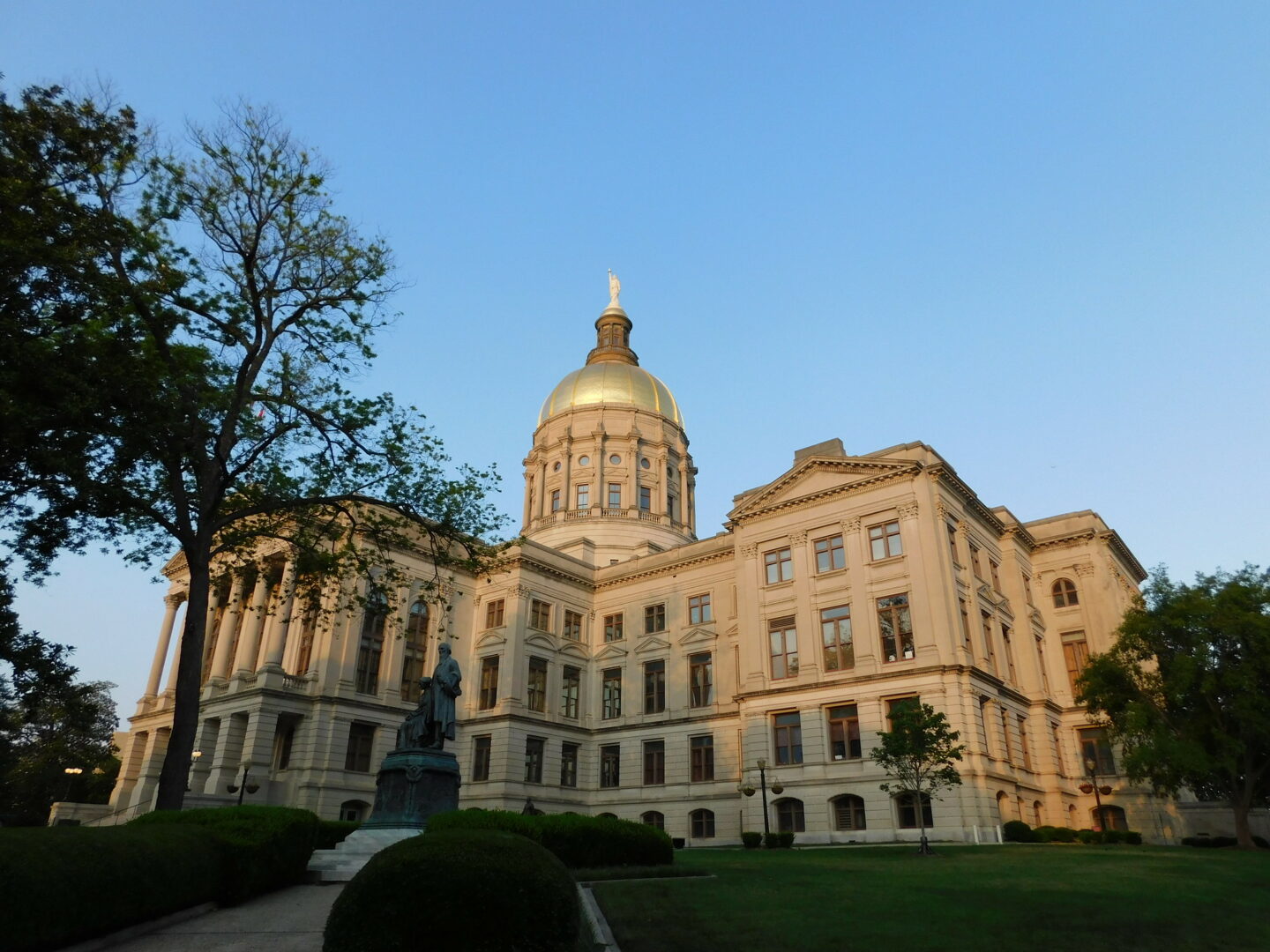The governor of Georgia, currently Brian Kemp, is the chief executive officer of a vast modern enterprise. The need for specialized expertise in governing and coordinating society means that Georgia’s governor must work with a variety of other elected officials and appointed administrators. Article 5 of the Georgia Constitution, adopted in 1983, establishes an executive branch of government directed by a governor who serves a four-year term of office. The executive branch consists of more than 100,000 employees.

There are seven other popularly elected constitutional executive officers: the lieutenant governor, currently Burt Jones, who presides over the senate; the secretary of state, currently Brad Raffensperger; the attorney general, currently Chris Carr; the state school superintendent, currently Richard Woods; and the commissioners of agriculture, insurance, and labor, each presiding over his or her own executive department. The current commissioners are Tyler Harper (agriculture), John F. King (insurance), and Bruce Thompson (labor). In addition, the five-member elected Georgia Public Service Commission reports to the governor, and Article 4 of the constitution creates a variety of agencies, boards, and commissions, each with its own chairperson, some of whom are appointed.
The employees and elected officers of the executive branch provide many of the social services associated with the modern state. Three services dominate the executive branch’s budget: education, public health programs, and transportation. The state school superintendent, for example, is responsible for distributing funds to K-12 schools, pre-kindergarten programs, and the HOPE Scholarship, totaling $13.3 billion for the 2024 fiscal year. The Department of Community Health, Department of Behavioral Health and Developmental Disabilities, and the Department of Public Health, all members of the executive branch, promote health programs around the state, take precautions against infectious disease, and provide maternal and child health care. The Department of Transportation constructs and maintains the state’s public roads and bridges, which totaled 125,615 miles in 2021. Finally, the Department of Natural Resources and the Georgia Department of Economic Development respectively seek to preserve Georgia’s natural resources for recreational and economic use and to promote Georgia as a tourist attraction and investment opportunity.
In conjunction with the role of party leader, the formal powers of the office enable the governor to exploit several avenues of influence and leadership. One of the most important of these roles is ceremonial leader, or head of state. The governor is the visible official who commands media attention. The governor, along with the lieutenant governor, is also a major legislative player. The governor sets forth a recommended legislative agenda, initiates the budget, and signs or vetoes legislative bills.
The governor has several other important roles. These include the role of commander of both the Georgia State Patrol and the Georgia National Guard. Often overlooked is the role of the governor as the intergovernmental middleman, a fulcrum of power and a center of political gravity. In this capacity, the governor interacts with other state leaders and agencies, with cities and other states, and with the federal government. This role also calls for the governor to negotiate trade relationships and commercial ties with foreign interests, as Georgia becomes a greater part of the global economy.

A significant attempt to increase the power of the executive over the bureaucratic establishment occurred in 1996, when the civil service code and merit protection were eliminated for new state employees. Georgia became an “at will” employer, meaning that the governor can dismiss various department and agency heads and substitute persons selected in accordance with the governor’s own policy preferences.
The growth of Georgia’s population since the 1980s has led to an increasingly complex, interdependent society. In a given year the various agencies of the Georgia state government process more than 1 million driver’s licenses, almost 2 million vehicle titles, 4 million income tax returns, and more than 7 million vehicle registrations, in addition to handling 150 million criminal justice inquiries. This work is performed by state employees, some of whom work for the legislative and judicial departments, and thousands of local government personnel. These employees administer the largest self-insurance program in the state, maintain real estate leases in many cities, provide services for tens of thousands of telephones, and manage hundreds of thousands of procurement transactions. The state’s workforce is big business and is divided into many functional agencies: executive agencies, statutory advisory boards, executive departments, authorities and corporations, judicial agencies, decreed advisory boards, legislative agencies, inactive agencies, and interstate agencies.
Another of the governor’s responsibilities is to oversee the formulation of the state budget recommendations each year. State executive agencies prepare their budget requests, which are then reviewed by the Office of Planning and Budget, whose budget examiners will take into account the governor’s policy preferences. The requests may be cut or changed in many ways by the budget office and the governor as they prepare the final budget proposal. State law requires that the budget must be balanced, meaning that expenditures cannot exceed available funds. The official revenue estimate developed by the state economist will set a ceiling on the total amount that can be spent. The budget report is then presented to the General Assembly at the beginning of its session each January. Once introduced into the General Assembly, the budget is transformed into an appropriations bill. Appropriations bills, like all bills, must pass both the senate and the house to become law. The governor’s staff also works intensely with legislators to preserve the executive’s top spending priorities.
Once passed, the appropriations bill then goes to the governor, who can approve it in its entirety or choose individual expenditure items to veto. This major gubernatorial power is called a line-item veto, and it allows the chief executive to strike particular spending items, while the rest of the budget bill is unaffected.










